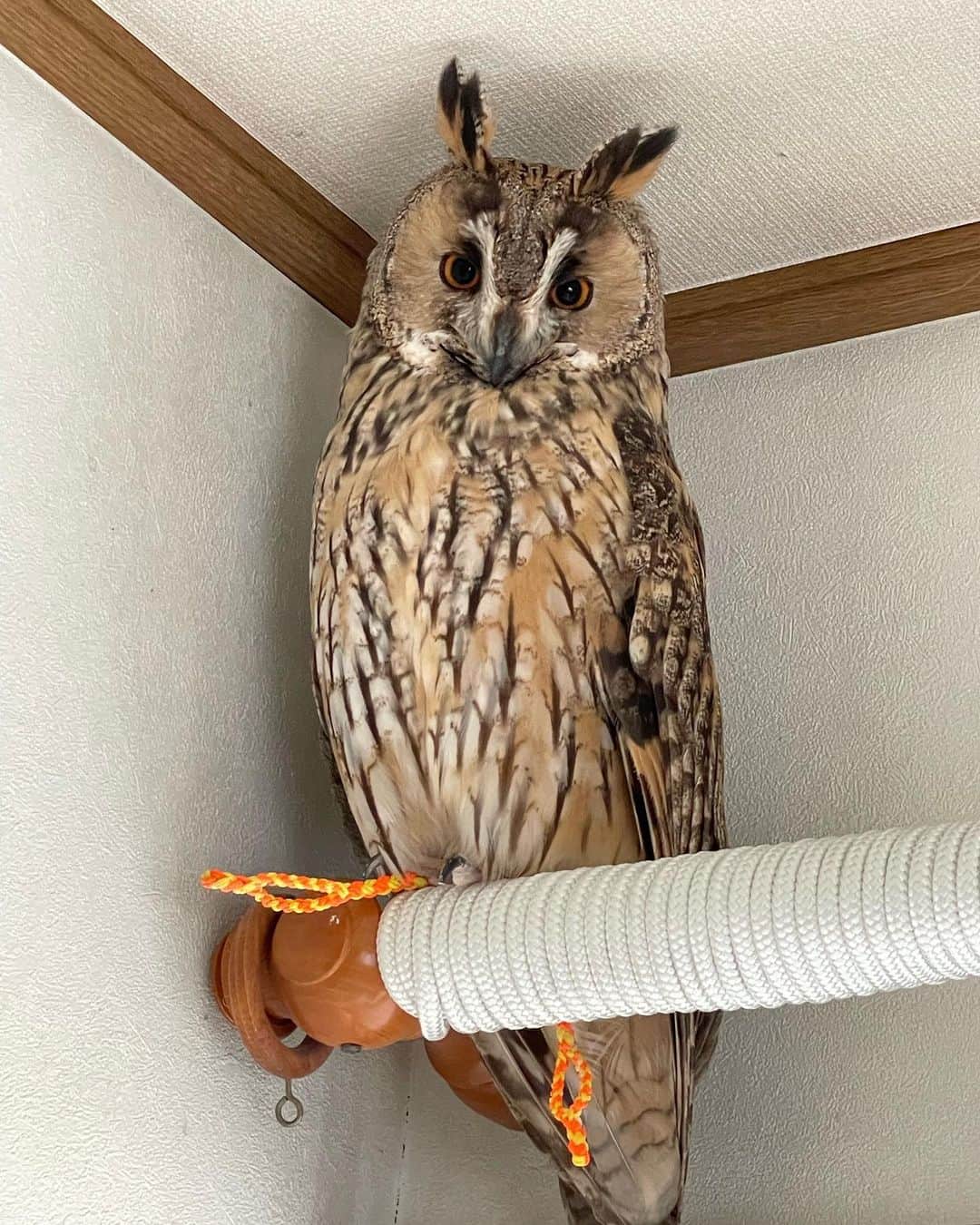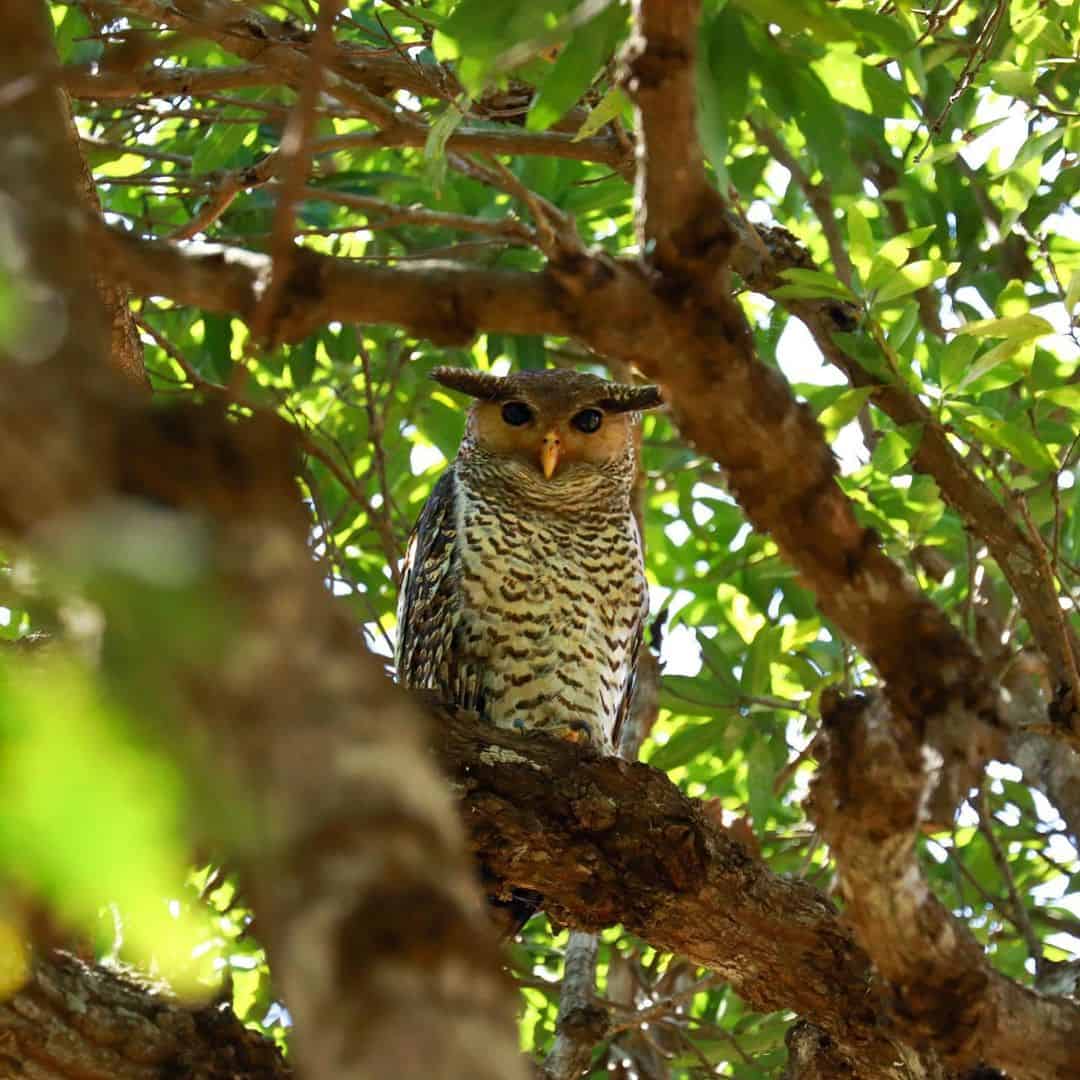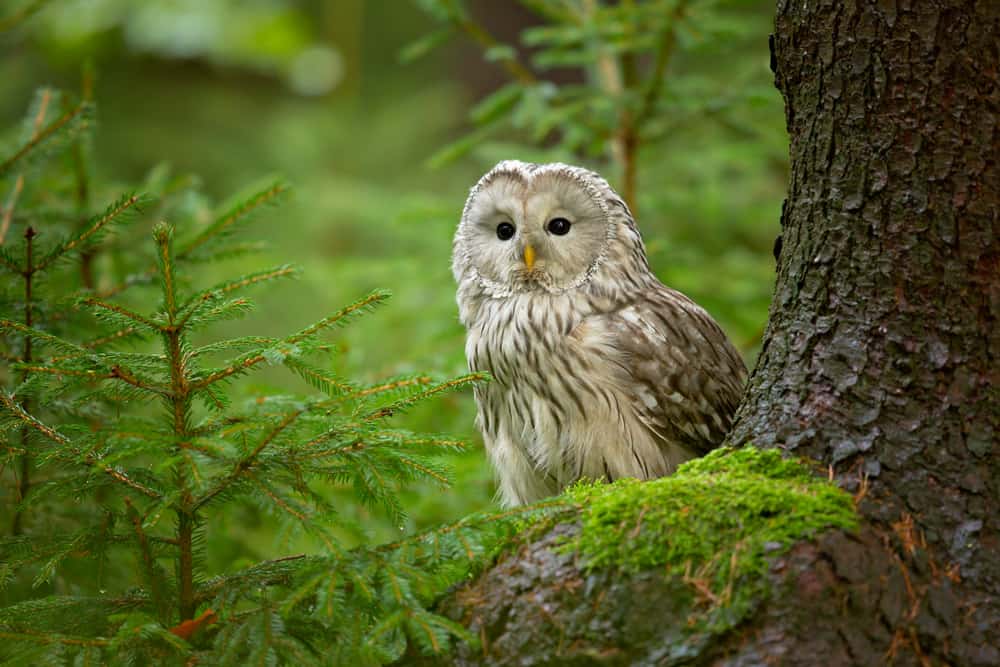Belonging to the order Strigiformes, owls are magnificent predators and one of the most identifiable nocturnal animals, meaning they sleep during the day and are active at night.
Although there are species of owls that are not nocturnal, what they all have in common is the sounds they make.
So, when we think about the sounds that owls make, our mind immediately jumps to “hoo hoo,” but is that the only sound they make? The answer is no! Interestingly, they make various loud sounds, such as hoots, barks, coos, screeches, squealing, and many others.
Furthermore, there are more than 39 species of owls in North America alone, and although they all make similar sounds, their meaning differs from species to species.
Before we dive into the subject, let’s first check out why these impressive predators emit these noises in the first place!
Why Do Owls Make Sounds?

You have probably found yourself in a situation where you can hear hooting from a distance but cannot see the ‘performer’ and wonder what it means or why it is making these sounds.
Interestingly, we usually hear them rather than see them because they are also masters of stealth, lurking in the darkness and scouring the area and potential ‘dinner .’So, why do they make these sounds?
There are several different reasons or ‘occasions’ during which they make different sounds. Those include: claiming their territory, warding off other predators, informing other owls about the presence of a predator, or communicating with their partner.
Fun fact: owls are monogamous animals, and they mate for life. Furthermore, besides being excellent hunters and able to locate their prey based on sound alone, owls also have romance skills. Male owls go out of their way to impress a potential mate.
Species of Owls and Sounds They Make
As mentioned, all owls make sounds, but their meaning can depend on a specific species. For example, all humans can talk, but our voices differ, and their tone can depend on various factors, such as mood.
Here is a list of various species of owls and all the sounds they make!
1. Barred Owls
Compared to other species, barn owls have a distinctive and specific sound that differs from the regular “Who-o-o, who-o-o.”Instead, they emit a hooting call consisting of 8-9 notes, commonly known as “Who cooks for you? Who cooks for you”.
These magnificent predators, mainly native to eastern North America, favor dense and thick woods with scattered clearings, especially in low-lying and swampy areas. Although they mainly inhabit North America, they can also be found in southeast Canada.
Besides this specific sound, they also make several similar sounds that are just higher in pitch, that can be anglicized to “wack-oh” and “who-HOO,” which they usually emit during the breeding season.
If you have ever encountered an angry owl or one that seemed threatened, they snap their mandibles or beaks.
2. Barn Owls
Some people confuse barred owls for barn owls; however, they are not the same type of bird. The barred owl is much more giant and colorful than the barn owl. On the other hand, barn owls are paler and do not have the markings seen on barred owls.
What is interesting about barred owls is their hooting call or sound, which also differs significantly from the barn owl. The sound these birds make is something you would never attach to a bird, let also an owl. Why?
The sound resembles something that you could have heard in a horror movie; they emit a high-pitched scream often compared to a banshee’s scream. This sound is usually emitted by males, who tend to call out in the air, while female owls use it infrequently.
When a male wants to inspect a potential location for a nest, they make a softer sound known as a ‘purring call. ‘On the other hand, females use it for different purposes- to ask for food from males.
They use a variation of this blood-curdling scream regarding their other sounds to communicate and warn other predators.
3. Great Horned Owl (Bubo virginianus)
Known for their intimidating yellow-eyed stare, great horned owls live in deserts, deciduous forests, prairies, wetlands, and similar habitats stretching from Alaska to Argentina. They are one of the most common owls in North America, also found in attics and barns.
The great horned owls are fascinating for a number of reasons-their appearance is quite a sight. They have these piercing yellow eyes and tufts of feathers in addition to their attitude. Interestingly, they are very aggressive and do not shy away from attaching even larger prey.
When it comes to the sounds, they are known for the usual low, sonorous “hoo-hoo” sound. or soft hoots. Interestingly, they also ‘communicate’ with their funny-looking pointy ears, if they are upright and pointed forward, that is, your sign to leave their territory.
4. Eastern Screech Owl ( Megascops asio)
If you saw a photo of a screech owl and then heard its call, you would never tie those two together. Screech owls are very short, with a big head, and appear to have almost no neck. However, what they lack in size, they make up for in sound.
Although it cannot be classified as a screech, its sounds resemble a trill or a whinny. The males have a main call, a soft trill or “bounce song,” consisting of different notes that last a couple of seconds. They use it mainly to communicate among themselves.
They also have a descending whinny sound, which they use when defending their territory. What is interesting about these small owls is that they are also masters of camouflage.
5. Great Grey Owl (Strix nebulosa)
Known as the giant owl, the great gray owls are distributed across the Northern Hemisphere and are not limited to North America. They commonly inhabit dense forests in Scandinavia, Russia, Siberia, Mongolia, and many other countries.
Interestingly, although they stand two feet tall and have an impressive wingspan of four feet, their massive appearance is partly an illusion. They have tiny bodies enveloped by a mass of fluffy feathers.
Great gray owls are excellent hunters, and their diet relies upon available rodents, such as mice and gophers. Like their other cousins, they hunt at night, and you can easily recognize the males by their deep and booming “hoo hoo-ooo” lasting a couple of seconds.
Females also hoot, but their hooting is higher pitched. During their breeding seasons, the male and female perform a duet. They emit territorial calls after dusk and during the day, which peak before midnight.
Common Sounds That Owls Make
1. Hoots
The most common and recognized owl sound is hooting, which is termed a form of their sound vocalization. However, many believe that every owl hoots, but that is not true. Some owls, such as barn owls, do not hoot the way most owls tend to.
2. Screeches
Screeching is a familiar sound emitted by many owls, including Western screech owls, great horned owls, and barn owls. They usually make this high-pitched sound when under threat, although some species use it to ‘announce’ an attack.
However, other species, such as barking owls, tend to produce this sound during their breeding season. It explains it is commonly called a “screaming woman.”
3. Barking

Another tactic of defense for these magnificent creatures includes barking, a sound they make when threatened and delivered in short and sudden intervals.
Some owls produce almost a “woof woof” sound when they feel under threat, such as Australian barking owls, hence its name. When these calls are made simultaneously by a male and a female, that is considered a mating or location ritual.
4. Growling
Besides barking, owls also tend to growl to discourage predators. For example, the barking owl makes a sound resembling a dog’s snarling while defending their nest.
However, these sounds are not persistent and come in short intervals-you can hear them only if you are in close proximity.
5. Shrieking
Hearing an owl shriek is probably one of the scariest sounds you can listen to, which is why it is used in horror movies. The most known ‘screamers’ are barn owls, although many other species tend to shriek, especially during infancy.
When infant owls emit these shrieks, when their parents go off to hunt during the night, they use it to signal hunger and call their parents.
6. Whistling
Did you know that owls also whistle? Mated pairs tend to whistle or emit a hollow whistling sound to stay in contact. However, infants also tend to produce this sound when hungry or to beg for food.
Spotted owls often whistle but make several other sounds, such as barking and hooting.
Conclusion
Although the most recognizable owl sound is hooting, they make several other calls, such as shrieking, screaming, barking, growling, and even snarling.
They emit these sounds with specific purposes, usually to signal an attack, communicate with their mate, defend their territory, and ward off a potential predator or threat. Furthermore, different species of owls make different sounds and calls.
The most distinctive is the barn owl, known for its loud and terrifying scream.
What do you think about these sounds? Please, share your experience and thoughts with us. If you have any questions, feel free to ask!
